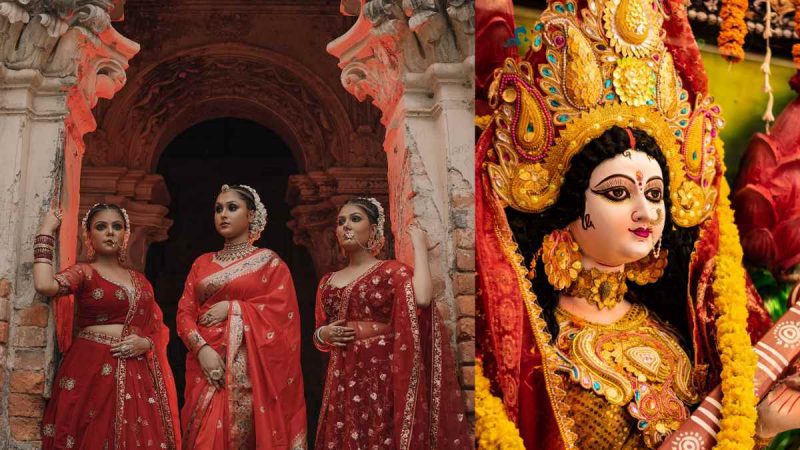The 9 days of Navaratri, are dedicated to the 9 manifestations of Goddess Durga. What’s fascinating is that each auspicious day of the festival has a designated colour, carrying its own significance. Women wear coloured sarees while worshipping the deities, attending pujas and revelling in the celebrations. But you know what’s even more fascinating? The association of Navratri with 9 colours is as recent as 2003. A Marathi newspaper’s marketing ploy gave birth to this unique tradition.
Marathi Newspaper’s Marketing Ploy To Increase Women’s Reader Base
The story goes back 21 years, Maharashtra Times, a Marathi daily was in a soup. Its competitors, especially Loksatta, boasting a larger women reader base, had captured the market. As per a report by Quint, the newspaper’s editor Bharatkumar Raut was desperately looking for a way to beat his competitors. After copious number of brainstorming sessions, they hit upon an idea: to create a unique Navratri tradition that captured the attention and excitement of Indian women, especially working women.
The idea was simple yet ingenious. Each day would be associated with a specific colour. This will encourage women to wear that colour on the corresponding day. The colours were chosen with care to symbolise the Goddess associated with that day. For example: white for Goddess Brahmacharini who symbolises purity, red for Chandraghanta, a goddess known for her beauty and courage, peacock green for Siddhidatri, the one with supernatural powers and so on. A smart play on colour theory and devotion.
Also Read: Navratri 2024: What Do The 9 Colours For 9 Days Of Navratri Signify?
9 Colours To Signify 9 Manifestations Of The Goddess Durga
During Navratri, Maharashtra Times would have a bold headline proclaiming the colour of the day. This was accompanied by a picture of a woman donning the colour of the day. Encouraging other women to join the vibrancy of the celebrations, the article also featured a story about Durga. Rather than housewives, this newspaper aimed to reach out to middle-class working women. It encouraged these women to share snaps of themselves in the colour of the day at their workplaces. The newspaper had dedicated pages to showcase these snaps sent to them.
Despite the initial lukewarm response, the initiative gained momentum as the festival approached. Women embraced the idea wholeheartedly, swept by a feeling of community. Over time, this marketing ploy turned into a nationwide mandatory Navratri norm. Nine different coloured sarees and ethnic attire were bought, alongside different jewellery sets to complement the colours. Women flaunted the colours to work and at festive gatherings.
Apart from giving women a much-loved nine-colour tradition, this initiative also helped boost the economy as people spent money on clothes, decorations, gifts and food. Over time, men also joined in the fun by flaunting kurtas and t-shirts that matched the colours of their wives’ sarees.
What started as a marketing ploy to increase women’s readership has transformed into a cultural phenomenon. An intrinsic part of Navratri. Now that we’ve let you in on a secret, are you wearing the colour of the day?
Cover Image Courtesy: Canva Pro
For more such snackable content, interesting discoveries and the latest updates on food, travel and experiences in your city, download the Curly Tales App. Download HERE.
